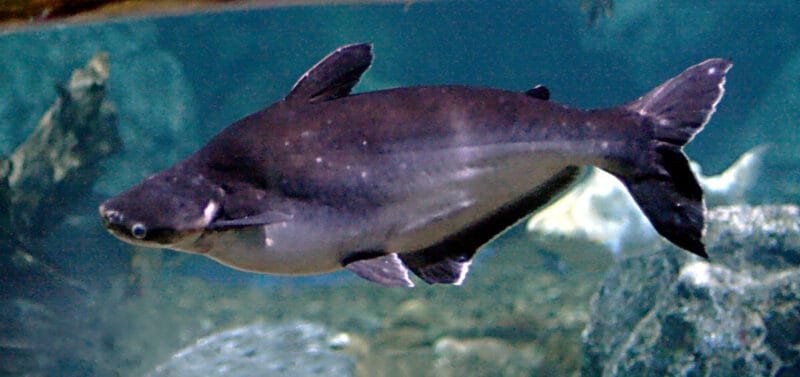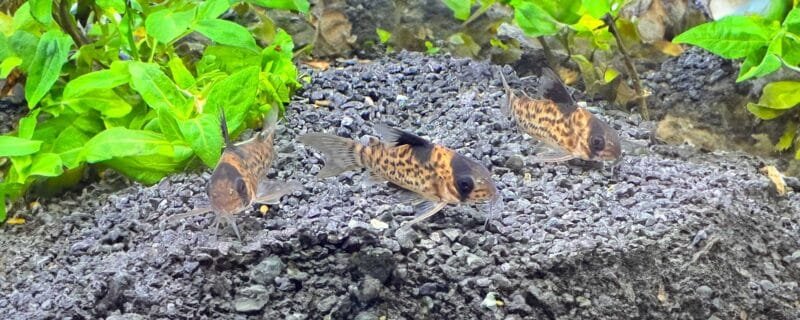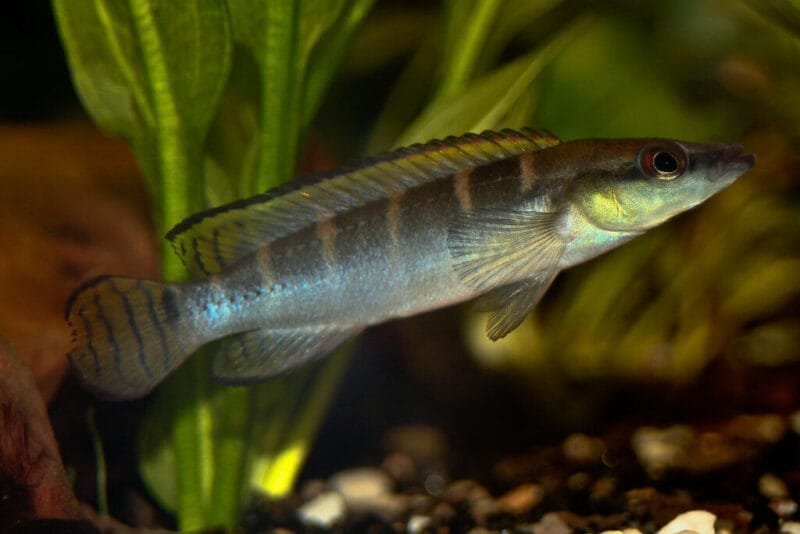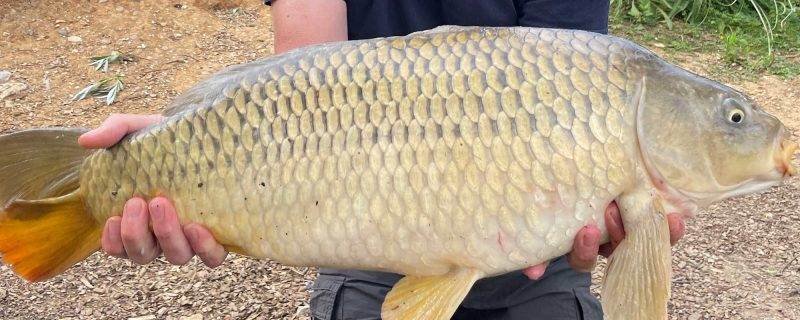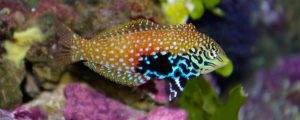Corydoras Julii, often called the Julii Cory, is a peaceful and social freshwater catfish species beloved by aquarists for its delicate spotted pattern and calm demeanor. This small bottom-dweller is a member of the Callichthyidae family, known for armored catfish with bony plates protecting their bodies. With their endearing behavior and community-friendly nature, Julii Corys are an excellent addition to peaceful freshwater setups.
Let’s explore everything you need to know about Corydoras Julii—from their natural habitat and size to diet, breeding, and even albino versions.
Common Name and Latin Name
-
Common Name: Julii Cory
-
Latin Name: Corydoras julii
Native Habitat
Corydoras julii is native to eastern Brazil, particularly within the coastal river systems. They thrive in slow-moving, soft-bottomed freshwater streams with ample leaf litter, plants, and detritus. The natural habitat features slightly acidic to neutral pH and warm temperatures, offering a rich, subdued environment perfect for this shy bottom-dweller.
Size
Julii Corys are small in stature, typically reaching 2 to 2.5 inches (5–6.5 cm) in length when fully grown. Despite their small size, they do best in groups and enjoy a spacious tank with room to roam the bottom.
Diet
In the wild, Corydoras julii forage constantly for microfauna, detritus, and plant matter. In captivity, they do well on a varied diet that includes:
-
Sinking catfish pellets or wafers
-
Frozen or live foods like bloodworms and daphnia
-
Blanched vegetables (zucchini, spinach)
-
Occasional high-quality flake food
They are scavengers, but that doesn’t mean they should only eat leftovers—dedicated feeding is essential for their health.
Sexing
Sexing Julii Corys can be tricky. However, there are subtle differences:
-
Females tend to be slightly larger and rounder, especially when viewed from above.
-
Males are typically smaller and slimmer.
These differences become more apparent during breeding periods or when the fish are well-fed and mature.
Breeding
Breeding Corydoras julii in the home aquarium is achievable with the right conditions:
-
Trigger spawning with cooler water changes (2–3°F lower).
-
Feed high-protein live or frozen foods in the lead-up to encourage conditioning.
-
Provide a soft substrate and smooth surfaces like glass, broad leaves, or breeding mats.
During spawning, the male will fertilize eggs as the female deposits them, often on tank walls or décor. Remove adults after spawning to prevent them from eating the eggs. Fry hatch in 3–5 days and should be fed infusoria or liquid fry food initially, then baby brine shrimp as they grow.
Water Conditions
Julii Corys are adaptable but prefer stable, clean conditions:
-
Temperature: 72–78°F (22–26°C)
-
pH: 6.5–7.5
-
Hardness: 2–12 dGH
-
Tank Size: Minimum of 20 gallons for a small group
A soft, sandy substrate is ideal to prevent damage to their sensitive barbels, and plenty of hiding spots (plants, driftwood, rocks) will reduce stress.
Ease of Care
Corydoras julii are easy to moderate in terms of care. They are hardy and forgiving of minor water quality shifts but need consistent maintenance. They thrive in established tanks with gentle flow, clean water, and low nitrates. Regular vacuuming and weekly water changes are recommended.
Community Tank Compatibility
Julii Corys are perfect community tank fish. They get along with:
-
Tetras
-
Rasboras
-
Dwarf gouramis
-
Livebearers (like guppies and platies)
-
Other Corydoras species
-
Small peaceful loaches and catfish
Avoid housing them with aggressive or large predatory fish. Always keep them in groups of at least 5 or 6, as they are shoaling fish and need companions to feel secure.
Species Variations
Corydoras julii is often confused with Corydoras trilineatus (Three-lined Cory) due to their similar appearance. However, Julii Corys typically have:
-
Smaller, distinct spots rather than reticulated patterns
-
A shorter, broken lateral line compared to the longer stripe in trilineatus
True Julii Corys are less commonly available, so many sold as Julii are actually trilineatus. Nevertheless, care requirements are nearly identical.
Albino Version
There is no specific albino variant of the true Corydoras julii, but albino forms of closely related species (like Corydoras aeneus) are common in the trade. While albino Corys share many behavioral traits with Julii Corys, they differ genetically and visually:
-
Pale pinkish or cream bodies
-
Red or pink eyes
-
Similar peaceful temperament and care needs
Albino Corys make great tankmates for Julii Corys but should not be confused as a color morph of the Julii species.
FAQs About Corydoras Julii
Q1: Can Corydoras julii live alone?
No, Julii Corys are social shoaling fish and should always be kept in groups of at least 5 to reduce stress and promote natural behavior.
Q2: How do I know if I have a real Corydoras julii or a Corydoras trilineatus?
Julii Corys have more distinct, individual spots and a shorter lateral stripe. Most pet stores sell trilineatus under the Julii name due to their similarity.
Q3: Will Julii Corys clean my tank?
They help by scavenging uneaten food but aren’t substitutes for proper cleaning. They need regular tank maintenance just like any other fish.
Summary
By understanding the needs of Corydoras julii, you’ll not only enjoy their peaceful company but also help them thrive in your aquarium. Whether you’re a beginner or an experienced aquarist, these delightful bottom-dwellers will bring life and charm to your tank.

